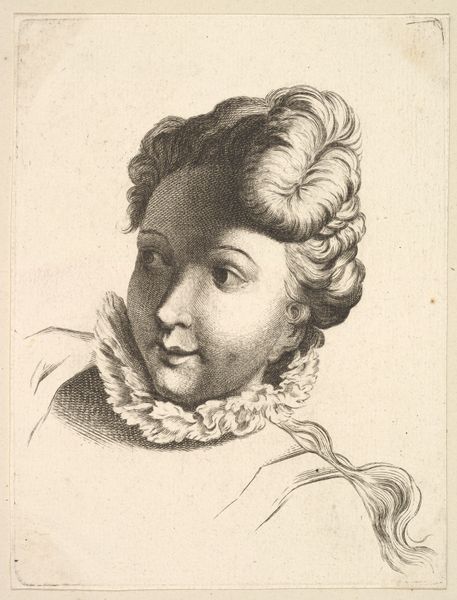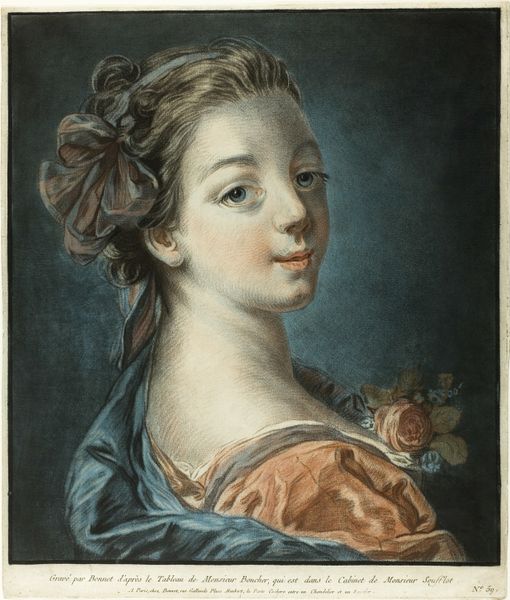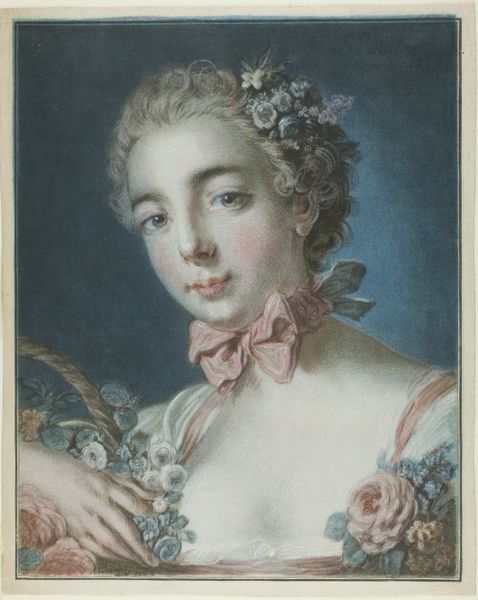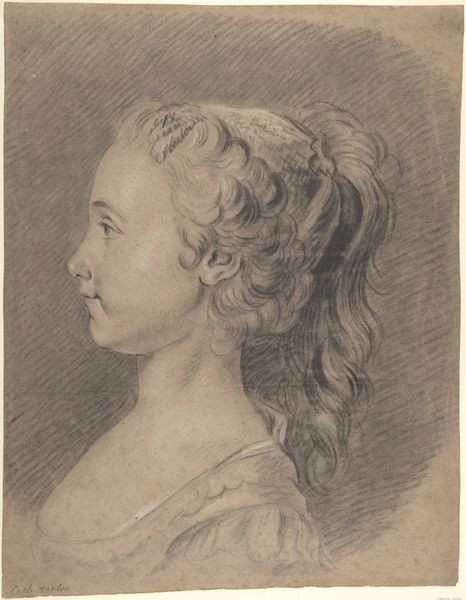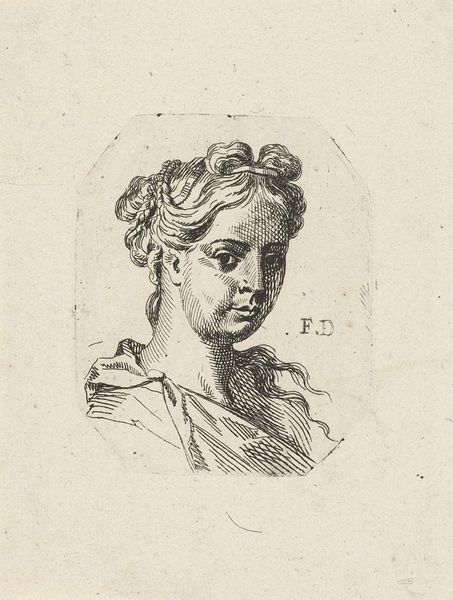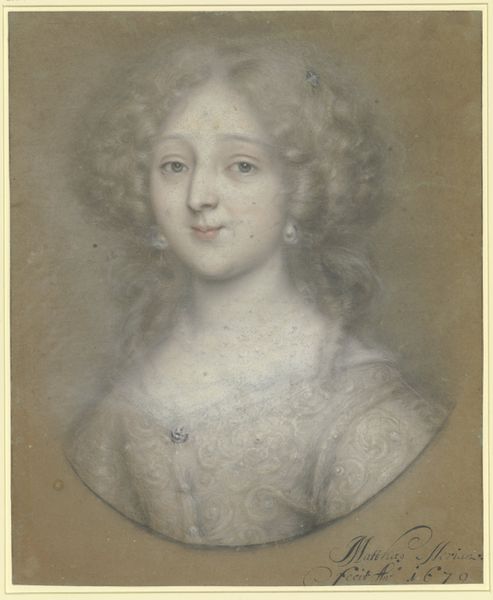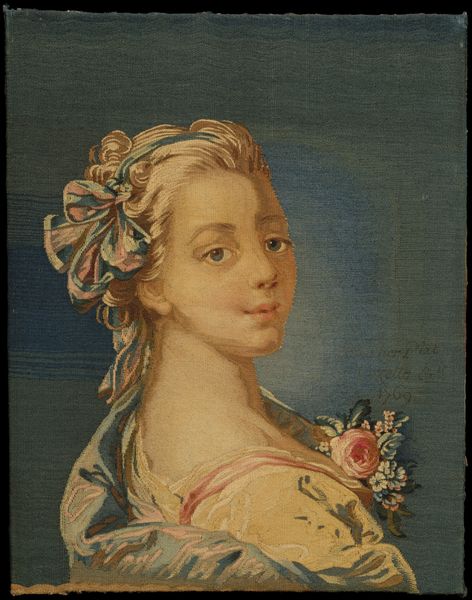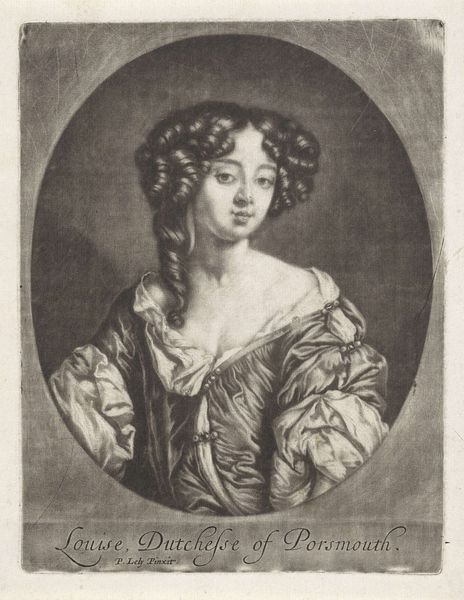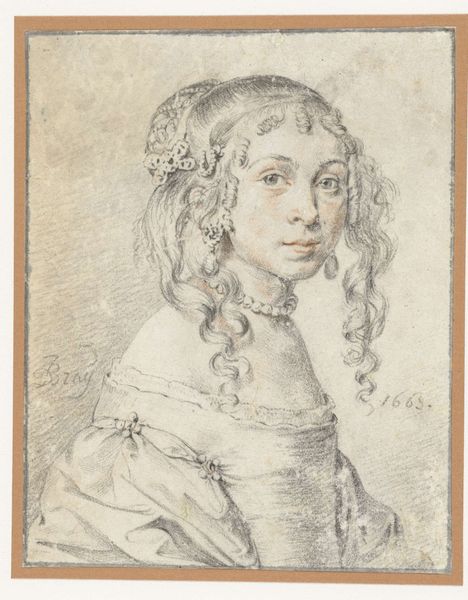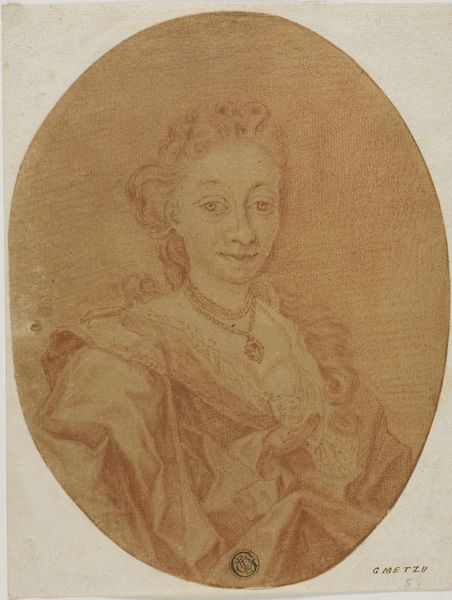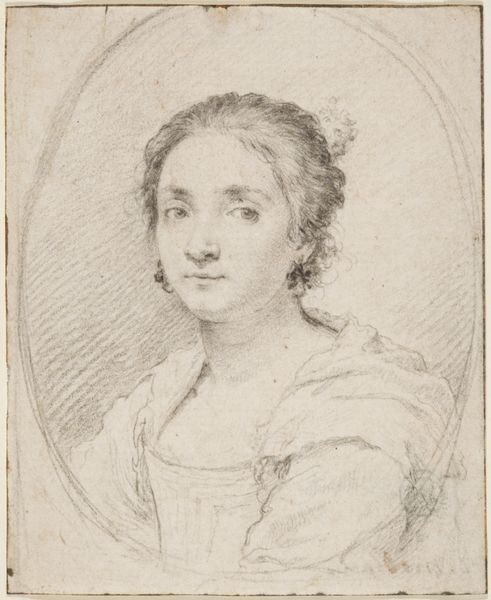
Copyright: Public Domain
Editor: Here we have Cornelis Troost's "A Young Woman as a Personification of Summer," created around 1746 using ink, pastel, and drawing techniques. The overall effect is delicate, and almost dreamlike. How might we interpret this work within its historical context? Curator: Well, consider the socio-political forces at play in the 18th century. The rise of the merchant class led to new patterns of patronage and art consumption, as well as how "Summer" becomes a theme for portraiture in elite circles. How does Troost’s approach to this figure play into the way women were being framed – or perhaps even marketed – at the time? Editor: That's fascinating. So, you’re suggesting the image operates on a representational level, but also reflects commercial intentions? The subject does project an almost marketable image, and yet her gaze feels very indirect... Curator: Exactly. The setting is deliberately ambiguous, drawing from the traditions of pastoral paintings, with its associations of leisure. Does Troost’s delicate, arguably idealized representation challenge, or simply reinforce, societal expectations? How does the actual creation and display of a pastel and ink drawing impact its function? Editor: It feels more nuanced than just pure reinforcement. The dreaminess almost makes her seem inaccessible, removed from the everyday marketplace, almost. Seeing the woman displayed through the lens of wealth and seasonality reveals some complexities about gendered roles and commercialism of that era. Thank you! Curator: Indeed! Considering such nuance enriches our experience, and invites crucial discussion about women's status in the era’s power dynamics and artistic output.
Comments
No comments
Be the first to comment and join the conversation on the ultimate creative platform.
